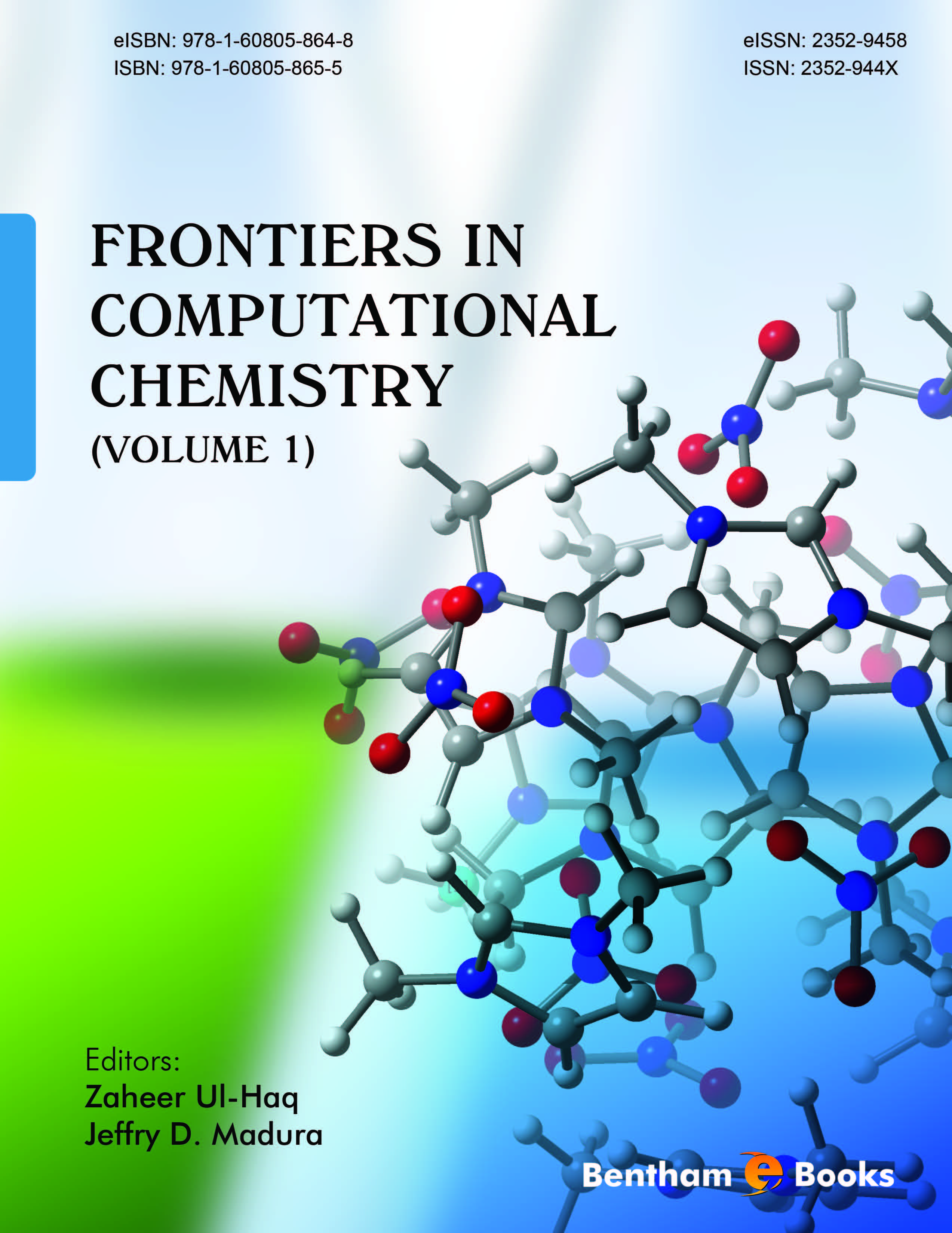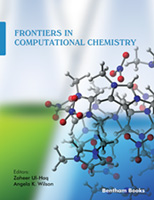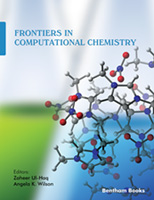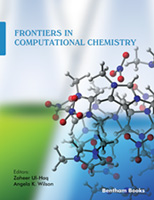Computational chemistry is a very diverse field spanning from the development and application of
linear free energy relationships (e.g. QSAR, QSPR), to electronic structure calculations, molecular
dynamics simulations, and to solving coupled differential equations (e.g. drug metabolism). The
focus of Frontiers in Computational Chemistry is to present material on molecular modeling
techniques used in drug discovery and the drug development process. Topics falling under this
umbrella include computer aided molecular design, drug discovery and development, lead
generation, lead optimization, database management, computer and molecular graphics, and the
development of new computational methods or efficient algorithms for the simulation of chemical
phenomena including analyses of biological activity. In this volume, we have collected eight
different perspectives in the application of computational methods towards drug design.
In chapter 1 “Computational Strategies to Incorporate GPCR Complexity in Drug Design” the
authors review various computational approaches to G protein-coupled receptors (GPCRs). They
review the use of GPCR databases to extract starting information about the structure and function
of these systems. The authors also review different strategies currently being probe the molecular
mechanisms of drug action as well as the development of new drugs.
The topic of chapter 2 “Knowledge-Based Drug Repurposing: A Rational Approach Towards the
Identification of Novel Medical Applications of Known Drugs” is of current interest in the
pharmaceutical industry. As we learn more about the biochemical pathways and the interactions of
compounds with proteins of these pathways, one can gain an appreciation of how current and
previous drugs can be used for other medical uses. This chapter discusses the use of
cheminformatics and bioinformatics in identifying new insights about known drugs.
Chapter 3, “Tuning the Solvation Term in the MM-PBSA/GBSA Binding Affinity Predictions”
focuses on the development and application of a computational tool. A widely used method,
Molecular Mechanics Poisson-Boltzmann (Generalized Born) Surface Area (MM-PBSA, MMGBSA),
is discussed in terms of applying the method to calculate accurate binding affinities. The
authors point out that in order to obtain good, reliable results the MM-PBSA or MM-GBSA
methods need to be tuned for a particular system. In particular, they focus on interior dielectric
constant as well as the PB and GB solvers.
A very active area of experimental and computational research is protein-protein interactions that
is the topic of Chapter 4, “Recent Advances in the Discovery and Development of Protein-Protein
Interaction Modulators by Virtual Screening”. In particular, the application of virtual screening
methods to find compounds that modulate protein-protein interactions. This is a very challenging
task since protein interfaces are flat, large, and lack distinct features. The authors provide a review
of the use of virtual screening in protein-protein interactions as its role in drug discovery.
Across the scientific field, we come across the term “big data.” In particular, that data generated
from genomic projects is overwhelming. In Chapter 5 “Computational Design of Biological
Systems: From Systems to Synthetic Biology” the authors describe the development and use of
computational methods on large biological data sets to potentially engineer circuits. This systems
biology approach to understanding biological function is being used to develop synthetic
biological systems. Such developments have potential uses in biotechnology and in the
development of strategies to treat various diseases such as cancer.
Biological systems are complex systems to study. In Chapter 6, “Considering the Medium when
Studying Biologically Active Molecules: Motivation, Options and Challenges” we are reminded
that when studying biological systems not to forget the environment surrounding the system. Most
of the time, the environment is left out due to its complexity; however, one must keep in mind that
the environment may play a significant role in biological activity. The authors review some insight
into how to appropriately include the environment into the study of a particular biological system.
As computational power, hardware and software, continue to increase so do the systems, both
temporally and spatially. One approach to address the increase in systems is presented in Chapter
7 “New frontiers of coarse-grained approach to protein folding.” Coarse-graining involves the
reduction in the number of particles of the system by representing a small group of particles, e.g.
an amino side-chain by a single particle. This reduction in the number of particles to represent a
biological system has the potential to allow for greater exploration of the free energy landscape as
well as simulation increased timescales. The authors review the use of coarse-graining in the study
of protein folding.
The last chapter “Computational chemistry strategies-tackling function and inhibition of
pharmaceutically relevant targets” reviews the various computational methods used to identify
pharmaceutically relevant targets. The authors illustrate the application of various tools from first
principles to empirical methods in the discovery and development of new compounds that
potentially lead or become the next drug. They appropriately point out that it is through the
combination of experiment and computations that lead to significant advancement in molecular
medicine.





